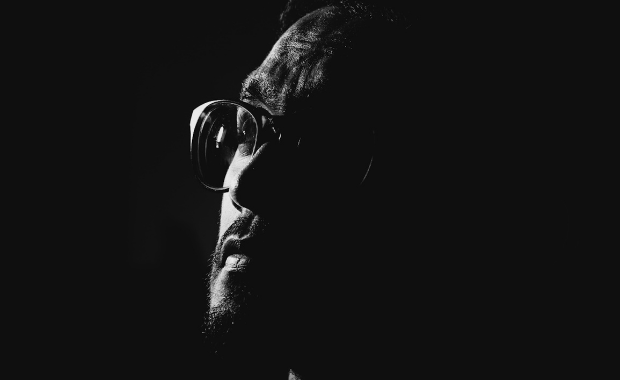Life
A Simple but Effective Technique to Be More Confident

Many people want to learn how to be confident in different situations, but it’s not always easy. Maybe we’re too addicted to comparing ourselves or maybe social media has brainwashed us to believe that we should all be rich, famous, and in incredible shape.
Anyway, today I’d like to share a simple yet super effective tip that skyrocketed my confidence back in time. I’m surprised why so few confidence guides talk about this, so I’ll share it here with all the awesome people like you.
The best thing is, this technique is proven, fairly easy to implement, and can bring you huge results if used properly. Alright, let’s start.
Understanding human psychology
To learn this technique, you must first understand some basics of confidence and human psychology. Confidence is basically your ability to trust yourself and your capabilities in different situations. You’ll achieve ultimate confidence when you know that you can handle a certain situation, regardless of what happens.
When you do something you’re very capable of, you’ll probably feel confident because you know that the outcome will be positive. But what if I told you that even negative outcomes could be turned into your favor?
See, whether the result of something you do is positive or negative, it’s all up to you. It’s not about whether you succeed or not. It’s about how you see and carry yourself with your capabilities. By changing your mindset and actions, you can also change how the world around you reacts to you.
The key to this technique lies in human psychology. With the right mindset and actions, you can deal with any outcome in any situation and thus be confident.
“Action is a great restorer and builder of confidence. Inaction is not only the result, but the cause, of fear.” – Norman Vincent Peale
How to use this technique and be confident
Let’s say you’re giving a presentation but you haven’t prepared well. This gives you insecurity because you could end up embarrassing yourself. The presentation starts well, but eventually, you forget your lines, freeze, and everybody starts laughing.
So what do you do? If you start apologizing and hating yourself in front of everybody, you’ll probably end up with even more insecurity. Instead, you can carry out yourself with dignity and respect by saying something like: “Good to see you’re having fun, these presentations are usually so boring. I should probably start forgetting more stuff to keep you hooked!”
When you do this, you signal that failing is OK, and it isn’t embarrassing at all. It was actually a good thing because everyone was having fun. This is what carrying out yourself with dignity means. Think about how confident you’d feel before the presentation if you knew that you can deal with failures that easily.
If you’ve mastered your mindset properly, you also believe that it is OK to fail and you could easily turn that negative outcome into your favor. On top of that, the other people would definitely sense your confidence and start to respect you more.
When you start receiving the external validation, you’ll end up being even more confident. This leads to a positive spiral of confidence that will amplify itself.
Getting comfortable with being uncomfortable
Giving a presentation is only one example. You can carry out yourself like that in almost any negative situation! Executing this technique effectively consists of three things:
- Realize that failing at something or having flaws is ok and it doesn’t determine your worth.
- Figure out a way to carry out yourself in a way that signals confidence and turns the situation in your favor.
- Remember that other people will see you as you see yourself, and let the positive results amplify your confidence.
Carrying out yourself with respect is a powerful way to deal with negative consequences. This helps you to be confident because you know that you’ll end up being fine regardless of the outcome.
Many people try to be confident by impressing others and bragging about things that they have succeeded at. And when they face failure and negative consequences, their insecurity will take control.
You’ll have to focus on yourself first. Change your own actions and mindset to serve you. You’ll need to become comfortable with your flaws, knowing that everyone has them. Accept the change that you will fail at something at some point, but it’s totally OK.
When you start with yourself and master your mindset, you’ll find out that your words and actions start to reflect it when you end up in a difficult situation. And when you know that other people will see you just as you see yourself, your confidence will skyrocket.
Again, to be confident, you must feel like you can deal with any outcome in a situation. And this technique gives you the tools to deal with negative ones. It’s as simple as understanding human psychology, becoming comfortable with a negative outcome, and carrying out yourself with self-respect and confidence.
Becoming more confident day by day
Learning this technique requires some practice, but since you’ve learned human psychology, you’re already on your way to success. So, start putting yourself out there and practicing. If it feels too intimidating, start with your mindset, and going out there becomes easier.
Think about the different situations you can use this. Somebody insults you for being too short but you turn it into a joke by saying that it’s good because you’ll fit better in your future Lamborghini. Or your flaw that comes up in a conversation but you admit it like it’s not a big deal.
In conclusion, remember that the world around you reacts to you as you react to yourself. Knowing this helps you to be confident because you can turn even the negative outcomes in your favor. When you master this technique, it’s like an invisible force field that turns the world into your oyster.
Did You Know
How Skilled Migrants Are Building Successful Careers After Moving Countries
Behind every successful skilled migrant career is a mix of resilience, strategy, and navigating systems built for locals.

Moving to a new country for work is exciting, but it can also be unnerving. Skilled migrants leave behind familiar systems, networks, and support to pursue better job opportunities and a better future for their families. (more…)
Life
10 Research-Backed Steps to Create Real Change This New Year
This New Year could finally be the one where you break old patterns and create real, lasting change.

Every New Year, we make plans and set goals, but often repeat old patterns. (more…)
Life
9 Harsh Truths Every Young Man Must Face to Succeed in the Modern World
Before chasing success, every young man needs to face these 9 brutal realities shaping masculinity in the modern world.

Many young men today quietly battle depression, loneliness, and a sense of confusion about who they’re meant to be.
Some blame the lack of deep friendships or romantic relationships. Others feel lost in a digital world that often labels traditional masculinity as “toxic.”
But the truth is this: becoming a man in the modern age takes more than just surviving. It takes resilience, direction, and a willingness to grow even when no one’s watching.
Success doesn’t arrive by accident or luck. It’s built on discipline, sacrifice, and consistency.
Here are 9 harsh truths every young man should know if he wants to thrive, not just survive, in the digital age.
1. Never Use Your Illness as an Excuse
As Dr. Jordan B. Peterson often says, successful people don’t complain; they act.
Your illness, hardship, or struggle shouldn’t define your limits; it should define your motivation. Rest when you must, but always get back up and keep building your dreams. Motivation doesn’t appear magically. It comes after you take action.
Here are five key lessons I’ve learned from Dr. Peterson:
-
Learn to write clearly; clarity of thought makes you dangerous.
-
Read quality literature in your free time.
-
Nurture a strong relationship with your family.
-
Share your ideas publicly; your voice matters.
-
Become a “monster”, powerful, but disciplined enough to control it.
The best leaders and thinkers are grounded. They welcome criticism, adapt quickly, and keep moving forward no matter what.
2. You Can’t Please Everyone And That’s Okay
You don’t need a crowd of people to feel fulfilled. You need a few friends who genuinely accept you for who you are.
If your circle doesn’t bring out your best, it’s okay to walk away. Solitude can be a powerful teacher. It gives you space to understand what you truly want from life. Remember, successful men aren’t people-pleasers; they’re purpose-driven.
3. You Can Control the Process, Not the Outcome
Especially in creative work, writing, business, or content creation, you control effort, not results.
You might publish two articles a day, but you can’t dictate which one will go viral. Focus on mastery, not metrics. Many great writers toiled for years in obscurity before anyone noticed them. Rejection, criticism, and indifference are all part of the path.
The best creators focus on storytelling, not applause.
4. Rejection Is Never Personal
Rejection doesn’t mean you’re unworthy. It simply means your offer, idea, or timing didn’t align.
Every successful person has faced rejection repeatedly. What separates them is persistence and perspective. They see rejection as feedback, not failure. The faster you learn that truth, the faster you’ll grow.
5. Women Value Comfort and Security
Understanding women requires maturity and empathy.
Through books, lectures, and personal growth, I’ve learned that most women desire a man who is grounded, intelligent, confident, emotionally stable, and consistent. Some want humor, others intellect, but nearly all want to feel safe and supported.
Instead of chasing attention, work on self-improvement. Build competence and confidence, and the rest will follow naturally.
6. There’s No Such Thing as Failure, Only Lessons
A powerful lesson from Neuro-Linguistic Programming: failure only exists when you stop trying.
Every mistake brings data. Every setback builds wisdom. The most successful men aren’t fearless. They’ve simply learned to act despite fear.
Be proud of your scars. They’re proof you were brave enough to try.
7. Public Speaking Is an Art Form
Public speaking is one of the most valuable and underrated skills a man can master.
It’s not about perfection; it’s about connection. The best speakers tell stories, inspire confidence, and make people feel seen. They research deeply, speak honestly, and practice relentlessly.
If you can speak well, you can lead, sell, teach, and inspire. Start small, practice at work, in class, or even in front of a mirror, and watch your confidence skyrocket.
8. Teaching Is Leadership in Disguise
Great teachers are not just knowledgeable. They’re brave, compassionate, and disciplined.
Teaching forces you to articulate what you know, and in doing so, you master it at a deeper level. Whether you’re mentoring a peer, leading a team, or sharing insights online, teaching refines your purpose.
Lifelong learners become lifelong leaders.
9. Study Human Nature to Achieve Your Dreams
One of the toughest lessons to accept: most people are self-interested.
That’s not cynicism, it’s human nature. Understanding this helps you navigate relationships, business, and communication more effectively.
Everyone has a darker side, but successful people learn to channel theirs productively into discipline, creativity, and drive.
Psychology isn’t just theory; it’s a toolkit. Learn how people think, act, and decide, and you’ll know how to lead them, influence them, and even understand yourself better.
Final Thoughts
The digital age offers endless opportunities, but only to those who are willing to take responsibility, confront discomfort, and keep improving.
Becoming a man today means embracing the hard truths most avoid.
Because at the end of the day, success isn’t about luck. It’s about who you become when life tests you the most.
Change Your Mindset
The Four Types of Happiness: Which One Are You Living In?
Most people chase success only to find emptiness, this model reveals why true happiness lies somewhere else.

In a world driven by rapid technological growth and constant competition, many people unknowingly trade joy for achievement. (more…)
-

 Shift Your Mindset4 weeks ago
Shift Your Mindset4 weeks ago11 E’s That Define Every Great Leader And Why Most People Miss Them
-

 Did You Know4 weeks ago
Did You Know4 weeks agoThe Success Patterns You Inherited (And Didn’t Notice)
-

 Entrepreneurs3 weeks ago
Entrepreneurs3 weeks agoThe Essential Skills Every Entrepreneur Needs In 2026
-

 Business4 weeks ago
Business4 weeks agoThe Hidden Money Pit in Your Operations (and How to Use It)
-

 Change Your Mindset3 weeks ago
Change Your Mindset3 weeks agoHow to Turn Your Mind Into Your Greatest Asset (Instead of Your Enemy)
-

 Change Your Mindset2 weeks ago
Change Your Mindset2 weeks agoThe Silent Skill That Makes People Respect You Instantly
-

 Life2 weeks ago
Life2 weeks ago10 Research-Backed Steps to Create Real Change This New Year
-

 Tech2 weeks ago
Tech2 weeks agoWhat’s in a Name? How to Get Your Domain Right

























